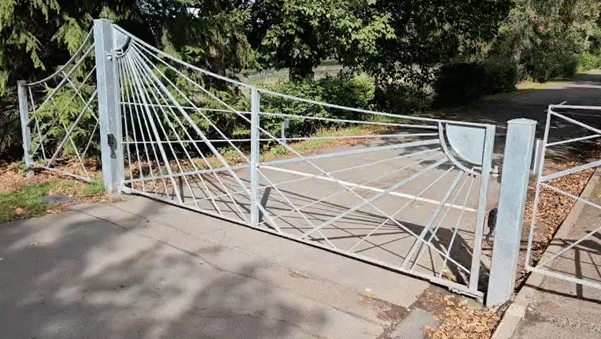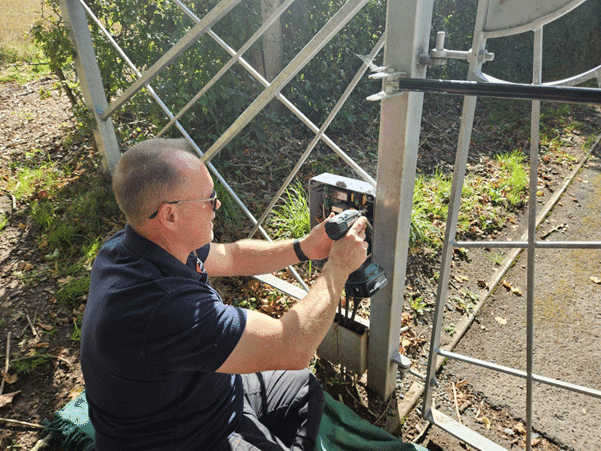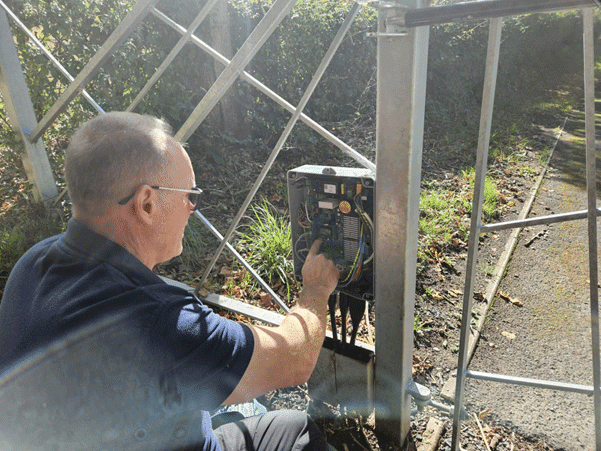Security, Efficiency, and Modernisation in Property Access Solutions
Introduction
SCI Management was tasked with assessing why the existing designer gates, installed by another company, had ceased functioning reliably and were only operational intermittently. This posed a significant issue as the gates were intended to serve as the school’s new main entrance and security barrier for the entire facility.
Background
Sunfield School needed to relocate its main entrance. A craft centre and coffee shop had recently been built on the grounds, and the school wanted these facilities to be accessible to the public. The existing barrier, located at the start of the driveway, allowed unrestricted access to the entire facility, including the school premises.
Previously, designer gates had been manufactured to reflect the sun’s rays at different times of the day. These gates, located further down the driveway, were identified as the ideal choice for the new security barrier.
However, the motors originally installed were only suitable for domestic use, with a typical duty cycle of 10 to 15 operations per day. Given that the school typically accommodates 400–500 visitors, staff, and deliveries daily, it was calculated that the gates would need to open approximately 1,000 times during a 12-hour period.
Additionally, the designer gates were not integrated with the school’s door entry and intercom system. There was no secure method for staff to gain access or exit the facility, nor was there a way to prevent unauthorised entry once the main barriers at the driveway entrance were opened. Adjacent to the gates was a pedestrian gate equipped with a gas strut closing mechanism, but it lacked a suitable locking device.
Objectives
- Ensure the gates could handle the typical daily traffic volume.
- Integrate the gates and pedestrian gate with the school’s existing door entry system.
- Maintain the aesthetic design of the gates, avoiding visible safety edges that could compromise their appearance.
- Connect the school’s existing network infrastructure to the gates without affecting the visual appeal of the main entrance.
- Install CCTV to monitor the gates and enhance security along the driveway.
- Ensure compliance with safety and accessibility industry standards.
Challenges Identified
- Legacy Infrastructure: The existing gate motors were unsuitable for the school’s traffic volume, and there was no Ethernet connection near the gates to link the door entry/intercom system to the school’s network.
- Multiple Entry Points: There was no effective security system to manage staff entry and exit.
- Diverse User Base: The school accommodates young children with severe disabilities, necessitating a user-friendly and accessible system for staff while ensuring visitors are properly vetted before entry.
- Power Supply Reliability: The existing power cables for the gate system were inadequate and non-compliant with current industry standards.
- Regulatory Compliance: The solution needed to ensure safety, preventing harm to individuals or vehicles during gate operation.
Solution Design and Planning
After reviewing the existing system, the following solutions were implemented:
- Hydraulic Motors: Heavy-duty hydraulic underground motors were selected to handle the required daily duty cycle.
- Network and Power Upgrades: An 8-core fibre optic cable was installed from the local lodge (already connected to the school’s network) to the gates. The existing power cables were upgraded to meet compliance standards.
- Access Control Integration: The school’s door entry system was integrated, enabling staff to use RFID cards for secure access and exit. A video intercom was installed to allow reception staff to communicate with visitors and grant access after appropriate vetting.
- CCTV Installation: A new IP CCTV system was installed to enhance security and provide reception staff with a clear view of visitors at the gates.
- Control Systems Housing: A concrete plinth was constructed to house a large, IP-rated kiosk for the various control systems. The kiosk was temperature-controlled to ensure equipment functionality in temperatures below 5°C.
Implementation
Phase 1: Site Assessment and Preparation
A comprehensive survey of the perimeter was conducted to determine optimal locations for the new control systems, power lines, and panels. A concrete plinth was installed, and the new kiosk was mounted with appropriate ducting for cabling. The old gate motors were removed, and trenches were excavated for new electrical and data cabling.

Phase 2: Installation
Heavy-duty hydraulic motors were installed to replace the existing ones. A maglock was fitted to the pedestrian gate, and the new access system was implemented to allow secure entry and exit for staff and visitors. Control panels, intercoms, and RFID readers were mounted at accessible heights and fully weatherproofed.

Phase 3: System Integration and Testing
The gates were synchronised with the central access control server. All safety sensors, battery backup modules, and intercom lines were tested to ensure fail-safe operation. The CCTV system’s NVR was installed in the school’s main comms room, with full access and control provided to the onsite systems administrator.

Phase 4: Handover and Training
Training sessions were conducted for site maintenance staff, security personnel, and other staff members. These sessions covered daily operations, troubleshooting, and emergency protocols.

